Best Video Cards: October 2014
by Ryan Smith on October 30, 2014 12:00 PM EST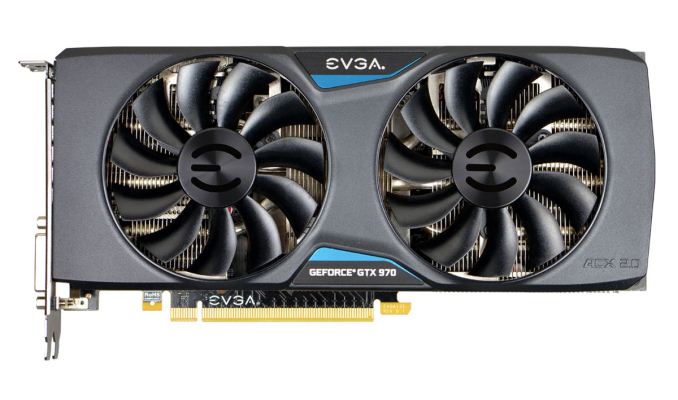
After a couple of months off due to a very busy fall product season, we’re finally back again with our monthly guide to video cards and video card industry recap. Since our last guide it has been a busy couple of months, so there’s quite a bit to cover.
The big news this fall has of course been the new video card launches from AMD and NVIDIA. While October has been a relatively quiet month, both companies kept September busy by pushing new products out the door and took others off the shelves.
AMD for their part released the first of their GCN 1.2 architecture GPUs: Tonga. Tonga serves as AMD’s replacement for the nearly 3 year old Tahiti GPU, the very first of AMD’s GPUs first launched in 2011. Tonga is an interesting – if still slightly mysterious – GPU, as we suspect we have not seen everything it and GCN 1.2 can offer. From a high level GCN 1.2 is a further refinement on the GCN architecture, bringing with it greatly improved Delta Color Compression for graphics buffers, a faster video decode block (H.264 L5.2 support), and a further optimized geometry frontend that better handles extreme tessellation factors. At the same time we suspect there are some compute/HSA improvements in the design that AMD has not disclosed and are being saved for the rumored Carrizo APU, Kaveri’s successor.
As for AMD’s desktop product stack, Tonga has been used so far in a single product, the Radeon R9 285. Like Tonga to Tahiti, R9 285 is designed to replace the R9 280 and similar second-tier Tahiti designs. Compared to R9 280, R9 285 is an unusual sidegrade that packs the GCN 1.2 features, a narrower 256-bit memory bus, and virtually identical performance to R9 280. Tahiti and R9 280 were in need of an update and R9 285 is a fine replacement, but if it has any weakness it’s that it hasn’t done much to push the overall performance envelope.
Meanwhile not to be left behind, NVIDIA released their own new wave of video cards powered by the Maxwell 2 architecture. The immediate successor to the Maxwell 1 architecture used in the GeForce GTX 750 series, Maxwell 2 brought NVIDIA’s previous power efficiency gains to the high-end with their new GM204 GPU, along with some new architectural features that make Maxwell 2 stand further apart from Maxwell 1. Among these is HDMI 2.0 support, HEVC hardware encoding, NVIDIA’s VXGI voxel rendering technology, and a suite of new graphics features that will be part of the Direct3D 11.3 specification.
GM204 in turn lies at the heart of the GeForce GTX 980 and GTX 970, which had a significant impact on the PC video card market almost overnight. GTX 980 took the top spot as the fastest single-GPU video card, pushing aside AMD’s Radeon R9 290X and even NVIDIA’s own GTX 780 Ti while setting new marks for power efficiency (all the more impressive since this is still TSMC’s 28nm process). Meanwhile the more affordable GTX 970 retained much of GTX 980’s performance at a lower price, which had a significant spoiler effect on the market due to its strong performance – second only to GTX 980 and often tied with R9 290X – coupled with a low $330 price tag.
In fact it’s only now, over a month post-launch that NVIDIA and their partners have finally caught up with demand. For the last month GTX 900 cards have been hard (though not impossible) to come by, reflecting the impact they’ve had on the market. The AMD ecosystem for its part has cut prices in response in order to stay competitive, and while AMD is facing a technological gap they can’t completely close with the R9 290 series, they can still put up a good fight with competitive positioning.
Finally, on a software note, we’re seeing the launch of this fall’s major video games, including games that were designed around the current-generation game consoles. Though the era of AAA action games being cross-platform means that PC video cards don’t always get used to their full potential, the flip side of this is that once there’s a console generation jump, we see a significant increase in the GPU requirements as the PC video card advantage gets reset. Of particular note, games like Shadows of Mordor and Assassin’s Creed: Unity are hitting shelves with high performance requirements and VRAM-hungry assets that can eat into 4GB+ of VRAM, as consoles are now using GPUs and graphical effects in from the same generation as current PC GPUs. For gamers this means upgrades may be in order, something AMD and NVIDIA are itching to provide.
Anyhow, market summaries behind us, let’s look at individual recommendations. As always, we’ve laid out our ideas of price/performance bands and recommendations in our table below, with our full explanations and alternative options to follow. As always, in the case of the sub-$200 market it’s worth pointing out that there’s a video card for roughly every $10, so picking a good video card is as much about budgets as it is finding an especially strong card.
| October 2014 GPU Performance Guide | ||||
| Performance Band | Price Range | Recommendation | ||
| 1080p (Low) | $99-$149 | AMD Radeon R7 260X | ||
| 1080p (Med) |
$149-$189
|
|||
| 1080p (High) |
$189-$279
|
|||
| 1440p (Med) |
$279-$349
|
|||
| 1440p (High) |
$349
|
|||
| 1440p (Max) |
$579+
|
|||
| 4K/Multi-Monitor (High) |
$560+
|
|||
As a general recommendation for gaming, we suggest starting at $99. There are cards below this price, but the amount of performance you have to give up below $99 far outweighs the cost. Even then, performance gains will generally exceed the price increases up to $150 or so.
Meanwhile for gamers looking for high quality 1080p gaming or better, that will start at around $199. Going above that will find cards that are good for 1440p, 4K, and multi-monitor, while going below that will find cards that will require some quality sacrifices to stay at 1080p.
Finally, this guide is by its very nature weighted towards price/performance, based on the passionate feedback we've received from our readers. For these purposes we consider AMD and NVIDIA to be equal from a functionality and compatibility perspective, but it should be said that both parties have been building out their ecosystem in the past year, and this will only continue to grow as the two companies try to differentiate themselves. So if you need or want functionality beyond the core functionality a video card offers, it may be worthwhile to familiarize yourself with the NVIDIA and AMD ecosystems, including Gameworks, Eyefinity, G-Sync, Mantle, GeForce Experience, and more.
Budget (<$100): AMD Radeon R7 260X
Though always a bit of a mess due to the sheer number of cards around the $99 price point, for this month the market for budget cards is going to be pretty cut and dry. At under $100 AMD’s Radeon R9 260X is going to be the fastest option available. Based on a full-fledged version of AMD’s Bonaire GPU, the R7 260X offers a good balance between price and performance, delivering the best performance to be found for this price segment.
Now this still isn’t going to quite hit the overall performance sweet spot we outlined earlier, but for those gamers on a strict budget it will get the job done. For current games it will be able to run most of them at 1080p with medium-to-low settings. For newer cross-platform games however, we expect to see it get forced back to low quality. One piece of advice here is that if you can snag one, a 2GB card is going to have longer legs than a 1GB card. Unfortunately most sub-$100 cards are the 1GB variety, but there is usually a 2GB card or two also available at that price.
Runner Up: NVIDIA GeForce GTX 750
Our second runner up here is NVIDIA’s GeForce GTX 750. Most GTX 750 cards are over $100, but there is a decent selection at $99, enough to make purchasing one at this price an option. Against the R7 260X it’s still going to be several percent slower, but it has an ace up its sleeve in its sub-75W power consumption, making it more favorable in power or cooling constrained systems.
Mainstream Sweet Spot ($149): AMD Radeon R7 265
At this point in time the $149 price point is in an odd spot due to how this price point is bracketed by cards above and below it. The card you’re most likely to find at this price point is AMD’s Radeon R7 265, the company’s lowest-tier Pitcairn card. Essentially a 7850 with a higher GPU clockspeed and a revised memory bus allowing for higher memory clockspeeds, the R7 265 a capable card for the price.
From a performance standpoint the R7 265 not going to be able to play every game at 1080p at high settings, but it will be fast enough for medium-to-high depending on the game, which will be a couple of notches higher than what the $99 cards can do. Meanwhile the 2GB of VRAM will mean that future games shouldn’t bog down the card quite as badly; higher graphical fidelity games will slow it down like any other card, but there’s enough VRAM to keep up with the demands of higher resolution textures and heavier use of intermediate buffers.
Runner Up: AMD Radeon R9 270 & NVIDIA GeForce GTX 750 Ti
While R7 265 is AMD’s official $149 card, the more powerful R9 270 has been flirting with the $149 mark as well. There aren’t really enough cards available at this price to qualify R7 270 as a $149 card, but it can be found at that price by the smart shopper. All things considered the R7 270 is the better card at around 10% faster, and if it can be found at $149 you should take it over an R7 265.
Alternatively, we have NVIDIA’s GeForce GTX 750 Ti, a card that offers below the R7 265 but with much lower power consumption. The GTX 750 Ti is a sub-75W card – no external PCIe power connector required – allowing it to work in cases and systems where the near-150W R7 265 cannot, while also offering the improved acoustics that come with lower power consumption. And at around $129 it’s going to be lighter on the wallet than R7 265, but performance standpoint it will trail by about 16%.
1080p Gaming ($189): AMD Radeon R9 280
Once we start approaching $200 we begin reaching some rather powerful cards, and in the process cross a pretty good fight for the $200 spot between AMD and NVIDIA. But at the end of the day AMD has the edge with their Radeon R9 280, the company’s second-tier Tahiti part. Officially this part is in clearance sale mode, but that has been the case for almost 2 months now with the supply still holding strong, so as long as that remains the case this is going to be the strongest card for those looking around the $200 price point.
The R9 280 should breeze through 1080p gaming, and with its 3GB of VRAM it should hold up to newer cross-platform games a bit better than some other cards. This card should even be able to hit 1440p in some scenarios, but I expect the next round of cross-platform games will keep it working hard just to stay at 1080p with high quality settings.
Runner Up: NVIDIA GeForce GTX 760
The GeForce GTX 760 falls a bit short of R9 280’s performance, but should R9 280 supplies finally dry up or you’re just looking for a $200 NVIDIA card it’s still a solid choice. As NVIDIA’s second-tier GK104 card it still packs quite a punch.
1440p Power ($279): AMD Radeon R9 290
Past $200, the launch of the GTX 900 series has caused a major disruption of pricing and sweet spots. Between the $189 R9 280 and $279 R9 290 there are some cards such as the R9 285 and GTX 770, but none of them are very interesting nor make all that much sense right now. With the R9 290 at $279, your best bet after the $200 mark is to just keep on going until you reach the first of our high performance cards.
At $300 or less there’s really no choice here. To that end AMD essentially wins by default, but the real winner is gamers who are getting a good card at a great price. Based on the second-tier version of AMD’s flagship Hawaii GPU, the R9 290 packs enough performance to tackle 1440p at medium-to-high settings, and its 4GB of VRAM means that it should have no problem even with demanding cross-platform games. Alternatively, if you want to drive 120Hz without spending a fortune, the R9 290 should get you there.
The Performance Sweet Spot ($349): NVIDIA GeForce GTX 970
Above the R9 290 and the biggest factor in reshaping the performance video card landscape in the last month is the cheaper of NVIDIA’s two GTX 900 series cards, the GeForce GTX 970. The GTX 970 is the reason AMD had to cut prices, and along with its sibling is arguably unmatched from a technological perspective. AMD can offer similar performance, but they can’t match NVIDIA’s power efficiency in this segment of the market. Making it possible to have a high performance card without also having the heat and noise that so often comes with it.
From a performance perspective the GTX 970 is a solid step up from the R9 290, and this is coupled with its very significant power advantage. It should have no trouble handling 1440p games on high settings, and between this level of performance, power consumption, and price it’s undoubtedly the sweet spot card for performance gamers. You can get faster cards, but not at this balance between performance and price.
The only downside here is that pricing is currently not holding to the card’s initial $330 MSRP. It’s not completely clear whether this is due to the previously limited availability, retailer’s taking advantage of demand, or board partners pushing their premium customized cards, but you have to be ready to shell out $350 to get a choice of GTX 970 cards. This does hurt GTX 970’s sweet spot designation a bit, though it’s still the strongest contender.
Runner Up: AMD Radeon R9 290X
As an alternative to the GTX 970 we have AMD’s Radeon R9 290X. At sub-4K resolutions it’s basically tied with the GTX 970 on performance, and consumes quite a bit more power in the process. But if you’re after AMD’s best card or just additional options at this price/performance level, it won’t disappoint.
Taking the Single-GPU Crown ($579): NVIDIA GeForce GTX 980
For the fastest single-GPU card on the market for gamers, NVIDIA’s top tier GM204 part, GeForce GTX 980, stands alone. As is often the case for NVIDIA’s flagship cards, NVIDIA is clearly charging a premium for the card, but in return you get performance a step ahead of any other card on the market. And power consumption is second only to the lower performing GTX 970, making it perhaps the most power efficient card of them all.
Overall GTX 980 should be able to handle 1440p with maximum quality settings, including a good amount of anti-aliasing. It’s not quite up to the task of handling 4K on its own (at least not without a compromise in quality settings), but owners of 120Hz 1440p monitors will find that it has enough power to push past 60fps at 1440p in several games.
4K for Me ($560): 2x AMD Radeon R9 290
If anything, the hardest pick is finding the best choice for a true high performance, high quality 4K gaming setup. No one GPU can deliver this, so instead we’re presented with a number of options for multiple GPUs.
Truth be told there are a couple of different ways to do this. Right now the two best options are both AMD, and this is due to the combination of their XDMA engine and their greater scaling at 4K. In the single-GPU race NVIDIA is untouched, but they’re still facing at challenge at 4K.
The cheapest way to get to 4K is with a pair of AMD’s Radeon R9 290 cards. From a pure performance perspective R9 290 in CF delivers a solid 4K experience; most games scale well over a single card, and there’s enough performance on tap that 4K at high quality settings is a practical option. All told this combination runs for $560, which also happens to be around the price of a 4K TN monitor.
The big drawback with this setup is that all of the good 290 cards are open air coolers, which means they require more space and better chassis cooling. A pair of blowers would be easier to work with here, but that would require moving up to a pair of R9 290Xs, and if we wanted a good blower that would require an even bigger step up to the GTX 980.
Runner Up: AMD Radeon R9 295X2 & 2x GeForce GTX 980
While at $900 it’s quite a bit more than a pair of R9 290Xs, AMD’s dual-GPU R9 295X2 makes for a very tantalizing alternative. AMD’s dual-GPU flagship card offers all of the performance of the 290X in Crossfire with vastly improved acoustics and in a smaller package, which alleviates the drawback of our 4K budget option.
Finally, the GTX 980 in SLI is also going to be a viable alternative here. From a performance perspective it’s going to trade blows with the R9 295X2 much of the time, so it’s still going to offer best-in-class performance regardless. The catch is that at $1160 for the dual card setup it’s some $260 more expensive than the R9 295X2 for what’s only similar performance. But unlike either AMD option, the GTX 980 is available in a high quality blower configuration, allowing a 3rd option between the widely spaced open air cards of R9 290 and the unconventional CLLC of the R9 295X2.


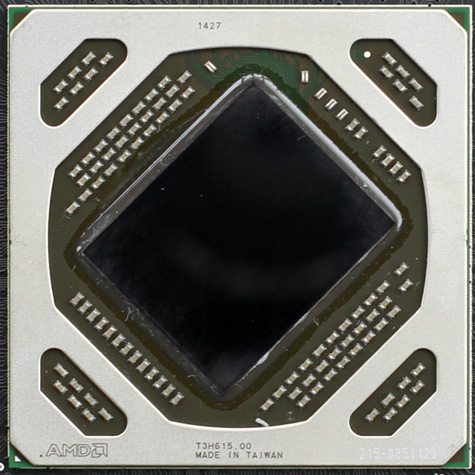
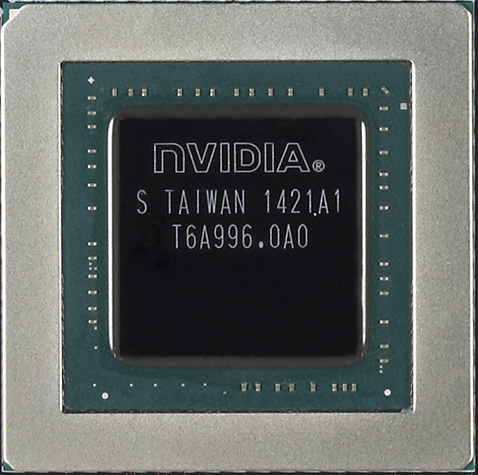
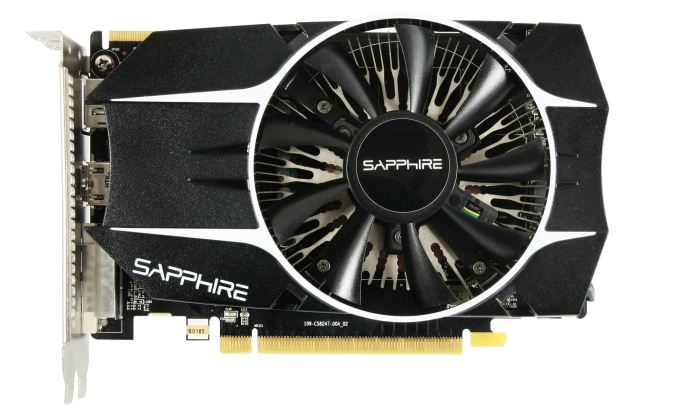

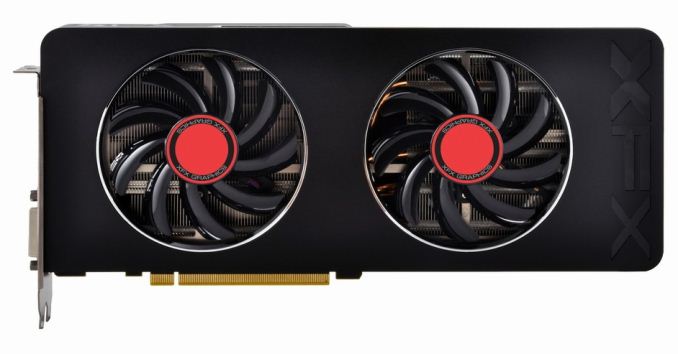

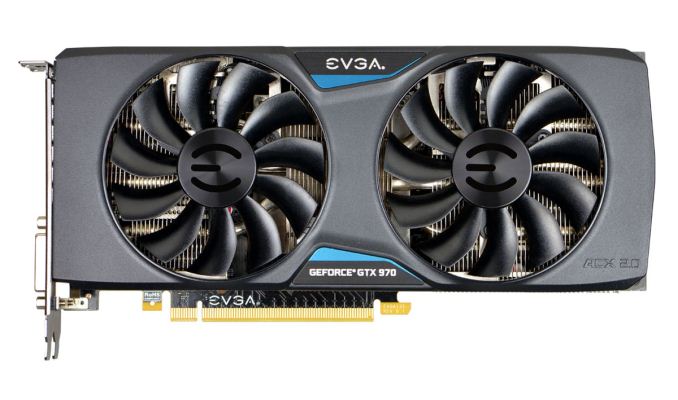

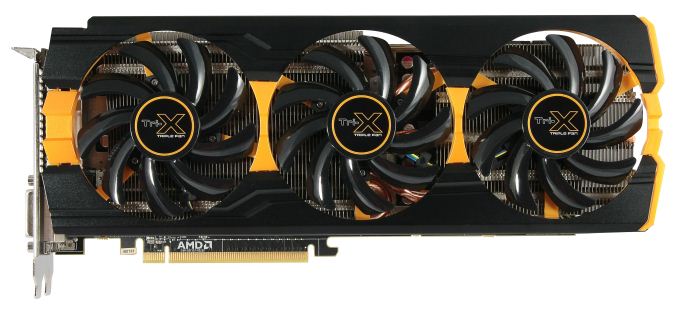









73 Comments
View All Comments
Creig - Sunday, November 2, 2014 - link
Since you seem to like quoting Kyle, I'll post this from the same article:"In most of the games tested GeForce GTX 980 SLI matched the same gameplay experience as AMD Radeon R9 290X CrossFire. This was surprising considering single-GPU GeForce GTX 980 is able to outperform single-GPU AMD Radeon R9 290X. We thought that naturally, putting two video cards together in SLI would equally excel past AMD Radeon R9 290X CrossFire. This wasn't the case. We got an unexpected result.
Instead, GeForce GTX 980 SLI was on par, equal with AMD Radeon R9 290X CrossFire in performance, most of the time. There were some occasions that AMD Radeon R9 290X CrossFire was even better than GeForce GTX 980 SLI, for example in Watch Dogs. We didn't expect that, considering that game had the heavy hand of NVIDIA Game Works applied to it. Yet, the competition seems to be scaling much better with CrossFire on that game. It seems SLI isn't doing well there.
We also saw problems in Alien: Isolation with SLI. Performance was more erratic, inconsistent compared to CrossFire. Performance even seemed to drop out when interacting with the computer terminals in the game under SLI. CrossFire had no problems with that."
So it's plainly obvious that AMD 290X's in CrossFire are a much better value than 980's in SLI for 4K gaming. Yes, the 290X's put out more heat the 980s. But a pair of 290X's are still $500 cheaper than a pair of 980's. FIVE. HUNDRED. DOLLARS. And you get the exact same gaming experience.
I'm pretty sure that most people would be willing to put up with the extra heat output of 290X Crossfire in exchange for keeping an extra $500 in their wallets.
chizow - Sunday, November 2, 2014 - link
And again, no one is questioning 290X has strong value characteristics *NOW*, thanks to the 970 and 980 invalidating AMD's pricing structure in order to compete.But clearly the market finds value in a card that is faster and also much more power efficient when it comes to gaming. Indeed, you can't say for sure most people are willing to put up with the extra heat output, because if you scan the various deal threads you will see many users are in fact torn over the prospect of adding a 2nd 290/X or 780/Ti rather than selling their existing card and just buying 2x970 instead.
Regarding the SLI comments from Kyle, in context, of course, he says he is surprised because the 980 beats the 290X so handily in single-GPU performance. There's no doubt Nvidia's SLI scaling right now leaves a lot to be desired, but the fact is its a new GPU on a new architecture. There's certainly optimism that Nvidia will improve their SLI scaling in upcoming driver revisions, and in the meantime, you still get to enjoy top of the line performance in gaming comfort with 300W less under load! THREE HUNDRED WATTS!
Warren21 - Monday, November 3, 2014 - link
Chizow, you shouldn't try so hard to hide the fact that you are and always have been biased to NVIDIA. You could have said all that you did of actual substance in about two sentences.chizow - Monday, November 3, 2014 - link
Where am I hiding this fact? I freely admit I've preferred Nvidia since G80 because they have consistently offered the best solution when it comes to gaming, driver/software support, and related gaming technologies. Its easy to prefer great products from any company when they consistently meet or exceed your needs and expectations! I'm sure Creig would have no problem admitting his bias for AMD either, for whatever his reason.But yes, here's the actual substance in 2 sentences:
It's a great time to buy a video card thanks to Nvidia and their release of the 970 and 980, which has compressed the price of all cards from the previous generations from both AMD and Nvidia. If you don't mind the 250+W heat of the 780/Ti or close to 300W of heat from the 290/X, then there are some amazing deals to be had right around that $300 price point set by the 970! Everyone wins regardless of where your "bias" lies! ;)
Creig - Tuesday, November 4, 2014 - link
Chizow, why do you keep going on about what pricing is *NOW* as if it's somehow good for Nvidia? You say the 970 and 980 invalidated AMD's pricing structure? Well, the 290 and 290X have now invalidated Nvidia's new card's pricing. That's how it goes.The 980 is completely overpriced, thanks to AMD. You can pick up a pair of AMD 290 For $500 while a single Nvidia 980 is $550! You actually SAVE money by going with AMD's much faster solution. Only the 970 is worth considering. The 980 isn't even remotely competitive in the cost/performance category.
chizow - Tuesday, November 4, 2014 - link
Because that's how it goes Creig. You should know this, other than the anomaly caused by the 7970's terrible launch pricing (which you probably defended), new cards push and compress the pricing down on the cards that preceded them. That's just called "progress".The 290 and 290X haven't invalidated anything, because for the bargain GPU shopper that doesn't mind 250+W space heaters, Nvidia has their own last-gen cards on offer as well, price cuts initiated a full month before AMD decided to get back in the game (wasn't this an AMD motto at one point?)! That's the beauty of it, you don't need to compare 2x290X to 2x980 when you can simply fall back to 2x780, 2x780Ti, or 2x970 all for similar pricing to 2x290X, and, you get all the benefits of Nvidia's superior driver support, features, and technologies as well!
There's always going to be a premium on the halo part, and there's always going to be a trade-off falling back on older generations, and from what I have seen in the various deals forums and FS/FT threads, that is obviously something people consider in their upgrade tendencies. Its amazing how many 290/290Xs or even 780/780Tis you can find for even cheaper than retail, what are all these people running from I wonder? :D
Creig - Wednesday, November 5, 2014 - link
You think all the way back to the 7970's launch price and call it terrible while completely bypassing the Nvidia Titan which debuted at a breathtaking $999? Ok then, next subject.AMD has COMPLETELY invalidated Nvidia's lineup. Did you actually read the article we're commenting on? Out of the seven categories, AMD took the top spot in five of them.
Budget - AMD R7 260X
Mainstream sweet spot - AMD Radeon R7 265
1080P Gaming - AMD Radeon R9 280
1440P Power - AMD Radeon R9 290
The performance sweet spot - Nvidia Geforce GTX 970
Taking the single GPU crown - Nvidia Geforce GTX 980
4K for e - AMD Radeon R9 290 Crossfire
And the "Taking the single GPU crown" is a hollow victory for the 980 as the "4K for me" category is not only faster, but cheaper by $19! Only the 970 stands alone as a win for Nvidia.
Ultimately, the overall most important metric in video gaming is price/performance. That is an unarguable statement. And right now, AMD is the obvious leader.
chizow - Thursday, November 6, 2014 - link
First of all, I've never defended Titan's pricing ever, in fact I've been very outspoken against Titan and even GK104 pricing. But nonetheless, it offered a massive increase in performance (over 2x from GF100/GF110), higher than the typical flagship to flagship gains and Nvidia charged a massive premium for it along with the ostensibly claimed compute capability. But this premium could ONLY occur because AMD priced their 7970 so terribly, it allowed Nvidia's SECOND fastest Kepler SKU to not only beat it, but also allowed Nvidia to price it CHEAPER. So yes, Tahiti pricing was terrible as it offered the worst increase in price:perf for a new generation and node we've ever seen, but just as I figured, you'd probably defend it.And AMD completely invalidated Nvidia's lineup? LOL, utter nonsense but no surprise coming from you, what initiated these price cuts again? Oh right, the 970 launch coupled with Nvidia cutting the price on their 780 and 780Ti. AMD responded a month later because they had to, they simply could not compete at their old price points and they were forced to undercut Nvidia further simply because that's how the cards fall.
So yes, AMD as usual takes the cheap, budget-oriented segments, but who can't afford a card that is just as fast or faster with better features, support, and game-related technology for $10-20 more? I mean prices are so compressed now, the difference in price in the sub-$330 is a burrito at Chipotle nowadays. Who can't afford an extra burrito or two?
Again, there's really no point in trying to drag the 980 down to the value market, Nvidia has plenty of last-gen options if power consumption is not a concern for similar price points (780/Ti) and of course the 970 that offers similar performance as the 290X at a similar price point, but with much lower power consumption. Its crazy to think you can run 2x970 for the same amount of power (probably even less) than a single 290X.
I mean honestly anyone who wants a 290/X will have no trouble finding one, same goes for the 780/Ti for that matter, but the 970 is still really hard to get! You can find 290X for $250 or less on any FS/FT forum, bet you can't find (m)any 970s! Guess that counts for something huh? :)
Creig - Thursday, November 6, 2014 - link
Here's a news flash for you, chizow. Nvidia is free to charge anything they want for their cards. AMD is not in control of Nvidia's pricing structure. Trying to blame AMD because Nvidia chose to price their Titan at $999 is utterly ridiculous. If Nvidia felt like releasing it at $250, AMD could not have done anything about it. Neither could they do anything about its actual $999 pricetag.Do you happen to recall the Titan Z? It was released at $3,000 while the faster AMD 295X2 was already available for $1,500. According to your theory, Nvidia should have lowered the price of the Titan Z because AMD had a competitive card already out there at half the price. Yet Nvidia still sold it for $3,000. It's Nvidia greed, pure and simple.
And yes, Nvidia's lineup has been completely invalidated by AMD. Do you see the article? Five out of the seven categories were won by AMD. And the '4K for me' category is not only faster, but also CHEAPER than the 'Single GPU crown' GTX 980. I don't know why you're even trying to argue the results when they're posted right in front of you. AMD cards are the better value for nearly every segment of gaming according to Anandtech.
As far as not finding a 970 in a FS/FT forum, it's only been released for a month while the 290/290X has been out for what? Over a year? How many people are going to buy a 970 and then try to sell it a month later? Try to keep it real, OK?
chizow - Thursday, November 6, 2014 - link
And here's a news flash for you Creig, even if these cards are incomparable when it comes to support and features, Nvidia is still bound to AMD for as long as reviewers and casual users use "FPS" and simple "price vs. performance" metrics over all else, as you've attempted to do here. So yes, AMD does have a direct influence on Nvidia pricing, and vice versa, to imply otherwise is completely and utterly ignorant. Again, what caused AMD to cut their prices so drastically in the last month, since the GTX 970 launched? Are you going to stupidly sit here and claim they are both free to charge what they want? If that was the case, why didn't AMD hold course at their $400 and $550 price points for the 290/290X, respectively, they're free to charge what they want!The simple matter of it is, Nvidia could have NEVER gotten away with charging $500 for their 2nd tier ASIC if AMD had not priced Tahiti so terribly in the first place. But instead of looking like the villain in it all, Nvidia actually looked GOOD, because they beat AMD in price, performance, and thermals. The GPU Tri-fecta. So yes, if Nvidia is able to charge $500 for their 2nd tier chip and AMD has no answer for their 1st tier chip until a good 1.5 years later, that opens the door for a stupidly price ultra premium part, which we saw in the GTX Titan. Again, none of this is possible if AMD prices their flagship 7970 where it belongs, at the historical $380-$420 price point, but instead, AMD asks for $550 for a measly 20% increase over the 18 month old GTX 580! For someone who touts price:performance as the only important metric, you sure do have a hard time acknowledging Tahiti offered the worst increase in this metric, ever!
Titan Z just built on this stupid pricing escalation but given how poorly it sold, and the fact Nvidia fans should not be fooled by the same Titan trick more than once, its highly doubtful Nvidia will try this again, and if they do, it certainly wont' sell as well as the first Titan.
And of course Nvidia's line-up hasn't been invalidated when as I stated before, there is a card within $10-20 that performs as well or better than every listed card that offers better features as well. Its a subjective list subject to price fluctuations, but none of this discounts the fact it was indeed Nvidia's release of the 970/980 and the price drops on the 780/780Ti that invalidated AMD's entire product stack, forcing them to slash prices.
And keeping it real? Again, who cares how long it has been on market? If what you said was true, y'know, how AMD offers the best parts with price:performance being the only important factor, then EVERYONE would be scrambling to buy these cards. Instead we see the opposite. Everyone is running AWAY from these hot last-gen cards and buying up the 970/980s in droves. We'll definitely try and keep this real as this action will be reflected in Nvidia's earnings call later tonite.
And finally I do find its funny how you keep emphasizing 4K for the <1% of users who run this resolution. Do you run 4K? Of course you don't, not to mention anyone who is willing to spend over $1500 on a 4K TV or monitor isn't going to be sweating over a few hundred dollars, and more than likely, already bought their 290Xs at the $550-$750 they were selling for before the 970/980 cut their prices at the knees a month ago.